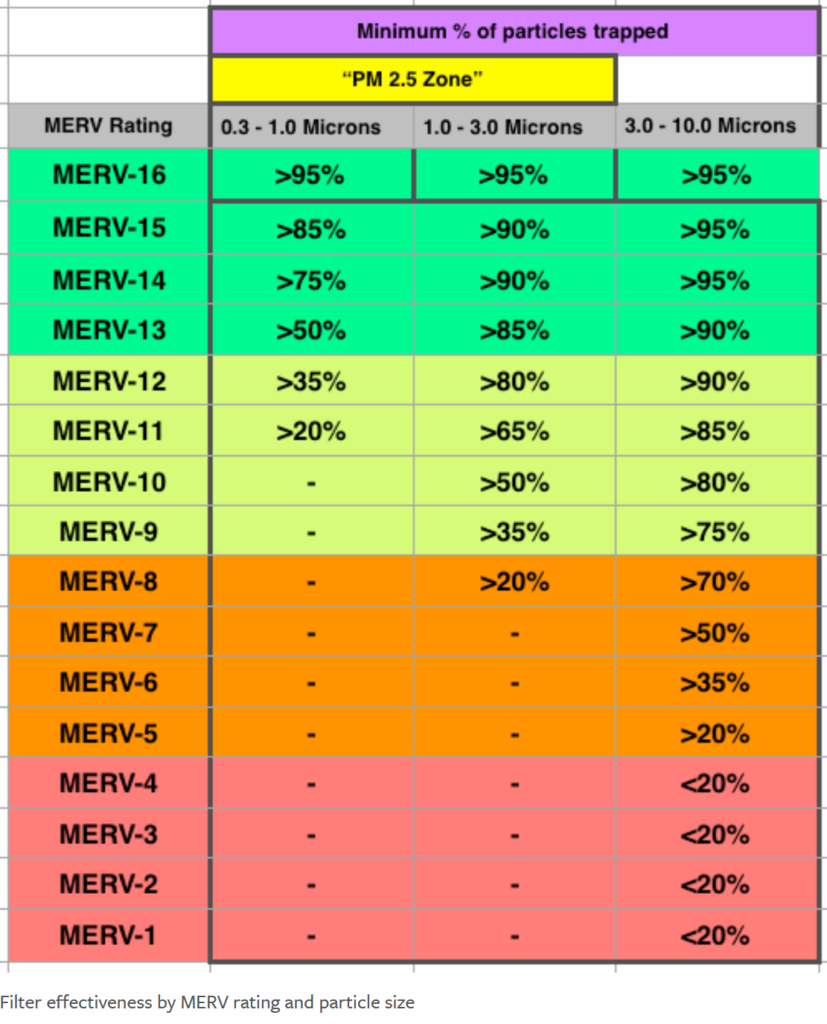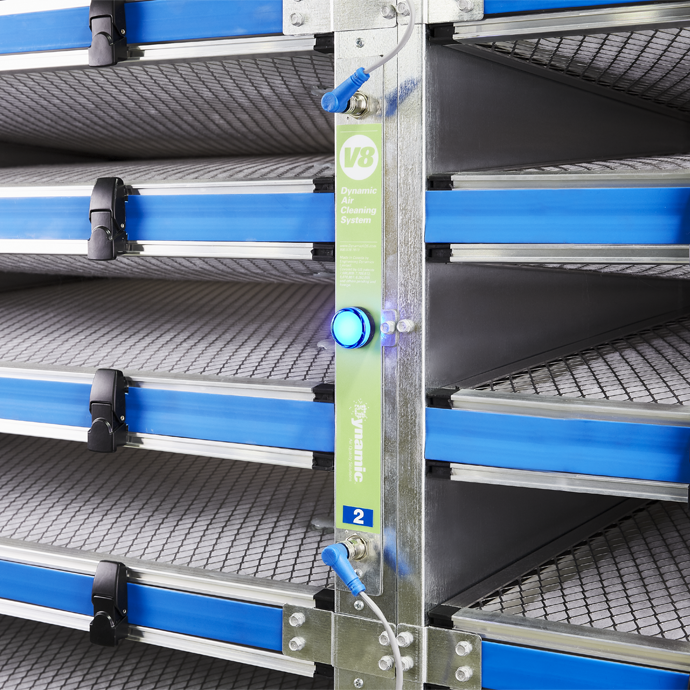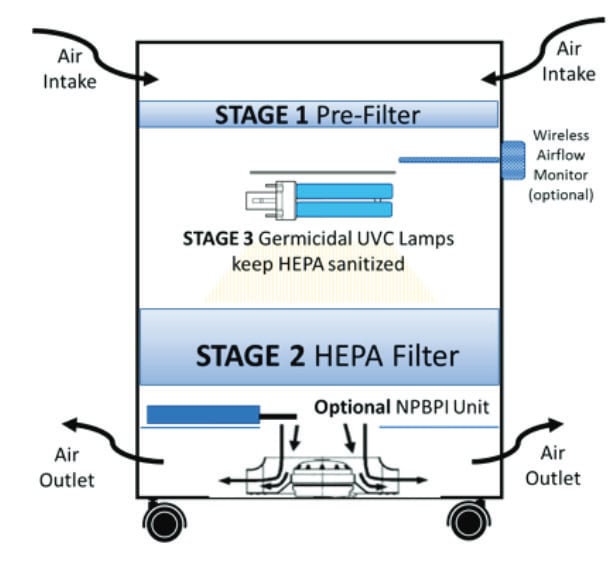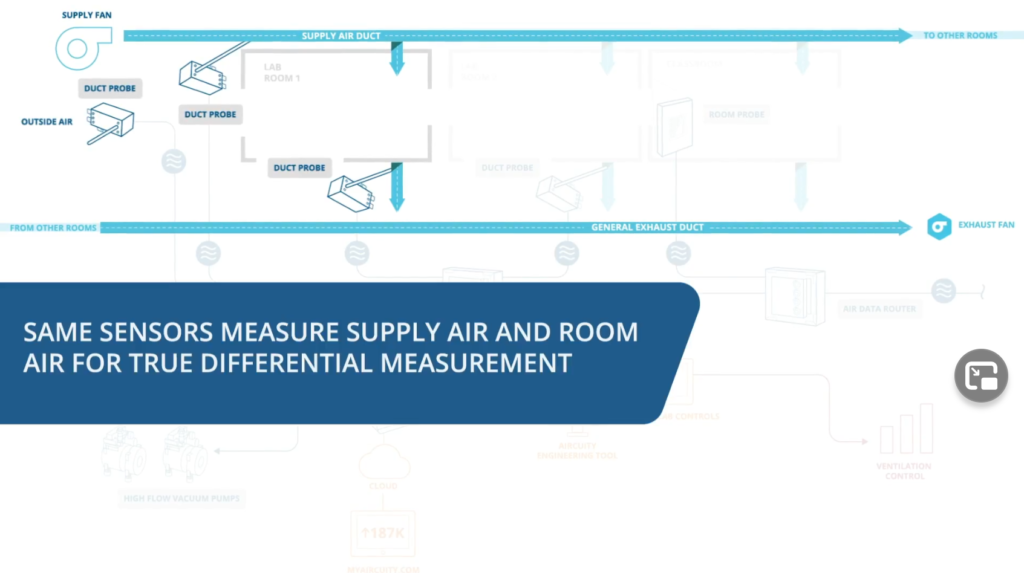April 10, 2021
By Luke Powell, WELL AP, LEED AP
I recently came across this study that was published March 27, 2021. The study came out of Spain and looked to assess air quality in classrooms after increasing ventilation as directed by public health officials. Ventilation conditions (carbon dioxide, CO2) and suspended particulate matter (PM2.5, PM10 and UFP) levels in 19 classrooms – including preschool, primary and secondary education – located in the metropolitan area of Ciudad Real, Central-Southern Spain were monitored during the school’s reopening (from September 30th until October 27th, 2020) after about 7 months of lockdown due to COVID-19 pandemic.
The following criteria were considered to select the classrooms in each school: classrooms with the most representative conditions (in terms of area/occupation) but with the poorest ventilation according to the criteria of school’s principals, and classrooms with higher occupation during weekdays, located in different floor levels and with different orientations.
Continuous monitoring of environmental parameters was carried out during the full operating hours of a school day under representative conditions of occupancy and use of the classrooms surveyed. The assessment typically started around 5–15 min before the students entered the classroom until just the end of the lectures or even 1 hour after the children leave the classroom.
A portable data logger was used for measuring and logging CO2, temperature and RH. Levels were measured based on a 1 min logging interval. The CO2 outdoor concentration was checked every day before and after measuring in indoor air.
Airborne particulate matter (PM2.5 and PM10) concentrations were assessed using a DustTrak DRX aerosol monitor. Levels of ultra fine particles (UFP) were measured by a P-Trak portable condensation particle counter.
During the sampling campaign, the heating & A/C systems were switched off in all of the surveyed schools. All classrooms were found to comply with the recommendation on having windows and the door opened to promote cross ventilation during the whole teaching period (natural ventilation). In fact, most of the sampled classrooms were exclusively naturally ventilated. Only one classroom was located in a new building built in 2019 with mechanical ventilation.
Findings suggested that although ventilation was increased through opening windows and doors, thus minimizing the risk of SARS-CoV-2 airborne transmission, a total of 5 (26%) surveyed classrooms were found to exceed the recommended CO2 concentration limit value (700 ppm).
Comparing CO2 concentrations obtained in this work with those reported by past studies conducted elsewhere, it can be verified that the present ventilation conditions in the sample of classrooms surveyed are greatly better than those reported in most of the existing literature for similar indoor environments. Overall, findings presented in this section suggest that the fresh air classrooms’ ventilation promoted through open windows and doors during the reopening of schools is guaranteeing adequate ventilation rates (in terms of indoor levels CO2) in about 74% of the studied classrooms, and thus in minimizing the risk of SARS-CoV-2 airborne transmission.
The indoor PM2.5 and PM10 concentrations substantially exceeded the recommended limits of 8hr-exposure, established by WHO, in 63% of preschools and 32% of the surveyed primary and secondary classrooms.
When found in outside air, these PM2.5 fine particles primarily come from car, truck, bus and off-road vehicle (e.g., construction equipment, snowmobile, locomotive) exhausts, other operations that involve the burning of fuels such as wood, heating oil or coal and natural sources such as forest and grass fires. Fine particles also form from the reaction of gases or droplets in the atmosphere from sources such as power plants. These chemical reactions can occur miles from the original source of the emissions.
PM2.5 is also produced by common indoor activities. Some indoor sources of fine particles are tobacco smoke, cooking (e.g., frying, sautéing, and broiling), burning candles or oil lamps, and operating fireplaces and fuel-burning space heaters (e.g., kerosene heaters).
This bad air quality is of concern. There are many negative health impacts that have been associated to particulate matter, in particular to those fractions of smaller sizes, i.e. PM2.5 and UFP (Lavigne et al., 2019; Stone et al., 2017; WHO, 2006).
The study concluded that the natural ventilation through opened windows and doors – which has been mandatory following the health authorities’ recommendations – are very likely to be influencing the high PM2.5, PM10 and UFP levels reported in the surveyed classrooms. They noted that although the real contribution from outdoor sources cannot be accurately estimated due to the lack of measurements in the outdoor environment, the location of preschools classrooms on the ground floor seems to promote a stronger infiltration of polluted outdoor air.
The researchers concluded that ventilation and PM source control/air filtration-based measures need to be addressed to reduce health risks.
So what can be done to ensure proper ventilation without negatively impacting the health of the occupants by introducing polluted air?
- If possible, mechanical ventilation systems should be used to bring in outdoor air that can be properly filtered. For a filter to get the MERV-13 rating, for example, it must filter out a minimum of 90% of the PM10, and a minimum of 85% of the PM2.5. The chart below shows the percentage of particles removed by size range of particle and the MERV rating of the filter.

- If the existing HVAC system cannot support a more efficient filter due to static pressure or airflow constraints, polarized filtration is an option. Dynamic Air Quality Solutions is one example of a polarized media that will give you the ability to capture ultra fine particles without the increase in static pressure loss.
- In Room Air Purifiers with HEPA filters are recommended when natural ventilation (windows and doors) is being used. HEPA purifiers remove PM2.5—even the smallest particles of PM2.5. GallatinAIR is an example of an in-room air purifier with a HEPA filter.
- Monitoring the quality of the ventilation air you bring in to the space will allow you to make decisions on the amount of outdoor air you are bringing in. Indoor environmental quality data on CO2, CO, particles and TVOCs is available 24/7 with a continuous monitoring system like that made by Aircuity. By prioritizing air quality improvement, schools and educators can create the healthiest, most efficient, and most productive learning environment.
- Needle Point Bi-Polar Ionization (NPBI) has been shown to neutralize and reduce small particles in the air. Adding NPBI such as that made by Plasma Air can be part of a layered approach to improving the air quality in your building.
Two important takeaways:
1. Opening windows and doors does not always provide enough ventilation.
2. It raises PM 10, PM 2.5 and UFP levels. Mechanical ventilation and filtration clearly have a place and are preferred.
You can find the full text of the study here: https://www.sciencedirect.com/science/article/pii/S0013935121003868








